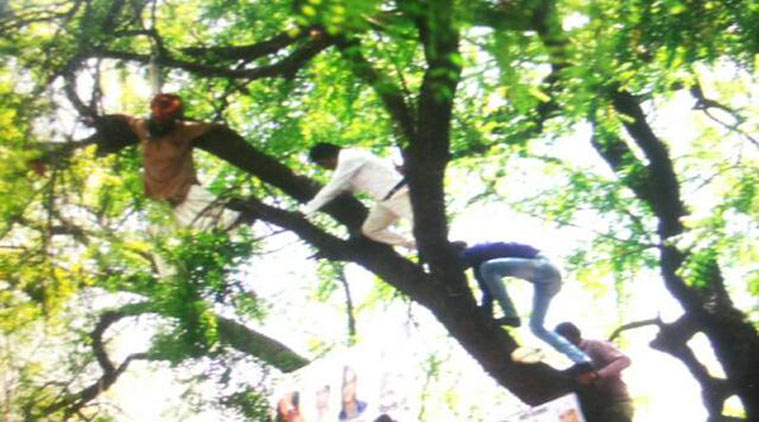Opinion View From The Left: Farmer Distress
Focusing on the death of a farmer during an AAP rally in Delhi, the CPI’s New Age says it brought people’s attention back to the “distress” faced by the agriculture sector.

 A photo showing Gajender Singh (extreme left) on a tree at the AAP rally at Jantar Mantar (Express photo by Praveen Khanna)
A photo showing Gajender Singh (extreme left) on a tree at the AAP rally at Jantar Mantar (Express photo by Praveen Khanna)Focusing on the death of a farmer during an AAP rally in Delhi, the CPI’s New Age says it brought people’s attention back to the “distress” faced by the agriculture sector. “The current anger of the people is against the land grab ordinances and proposed act that could be passed by the joint session of Parliament and for that too, the ruling combination has to use pressure tactics and horse trading to muster a majority. That is the most brazen onslaught of the [Narendra] Modi government but agrarian distress is not confined to that alone. Since the last two decades, our farmers have been committing suicide as the crisis in [the] agriculture sector is deepening with every passing day,” says the editorial. It points towards the “failure of crops, refusal to ensure remunerative price for their products and mounting burden of loans” as the reasons for this.
“In most cases, the distressed farmers commit suicide due to huge losses or inability to pay back loans… The government does admit that most of the farmers committed suicide due to ‘distress caused by debt burden’, but it has failed to take any measure to take farmers out of the debt trap,” it adds. “There is another aspect to suicides by farmers. This year, in vast areas of Uttar Pradesh, the orgy of unseasonal weather has destroyed standing crops. Over 100 farmers, after witnessing the destruction, collapsed and died. This is termed as sadma (shock) death. But the state and Union governments are not ready to recognise these deaths…” it claims.
Nepal Earthquake
The CPI(ML)’s ML Update talks about the devastating Nepal earthquake that, it says, has left a “massive trail of death and destruction”. The editorial says, “The staggering statistics of loss of life and major injuries give us only a very partial idea of the actual scale of devastation that Nepal has suffered in terms of life and livelihood ,as well as habitation and heritage. A lot in Nepal will have to be rebuilt virtually from scratch…”
“A tragedy of such colossal proportions confronts us with massive challenges of rescue, relief and rehabilitation… The kind of humanitarian aid and assistance needed that Nepal needs at this juncture can only be ensured if the international community, and especially India and other neighbouring countries, respond adequately,” it adds.
“This brings us to the question of our preparedness to manage disasters, especially ones that have no respect for borders and affect vast swathes of land across countries. Quake and floods in Kashmir and across the Indo-Pak border, cyclones in Bangladesh and eastern India, the tsunami in Sri Lanka and south India or earthquakes, landslides and avalanches in the Himalayan region of Nepal, India and China — in recent years, we have experienced major disasters in various parts of the South Asian neighbourhood. A shared South Asian disaster management force and mechanism can probably provide the best logistical means to respond to a cross-border disaster of such magnitude as Nepal and India are facing now… The challenge is to adapt to the threat. Seismologists keep telling us that we now have reliable quake-resistant engineering expertise to withstand earthquakes, and the real killer is not earthquakes but buildings built in violation of appropriate construction designs and norms,” the editorial says.
Compiled by Ruhi Tewari.





